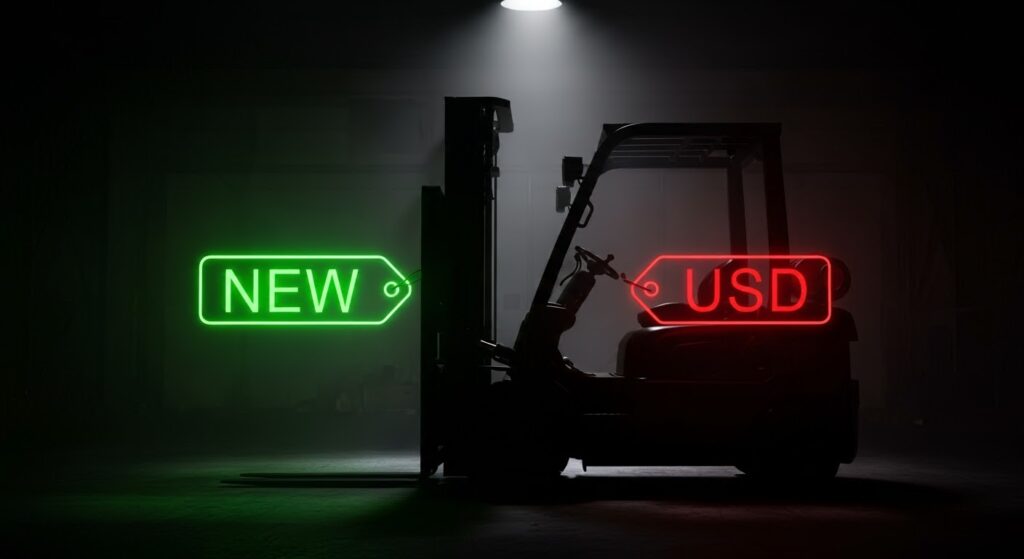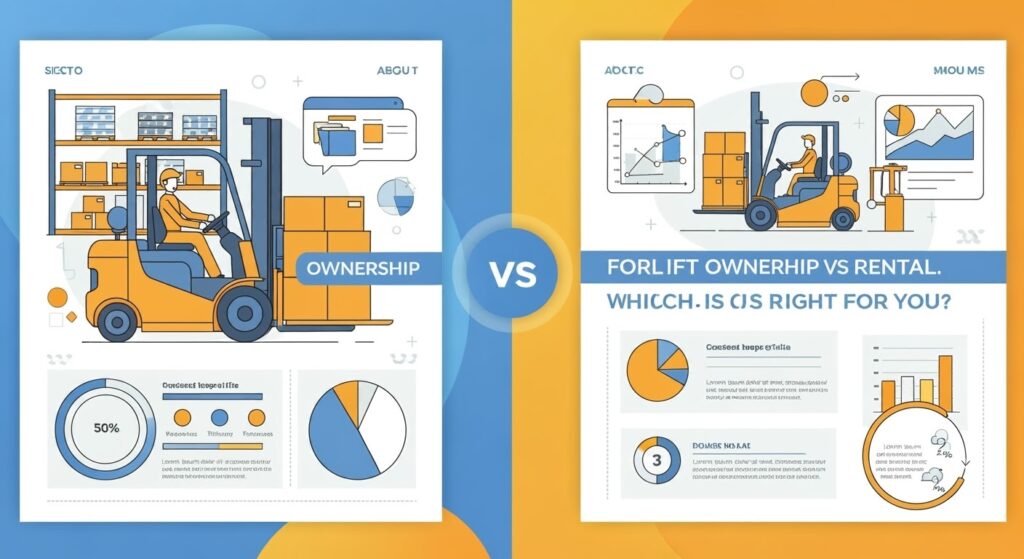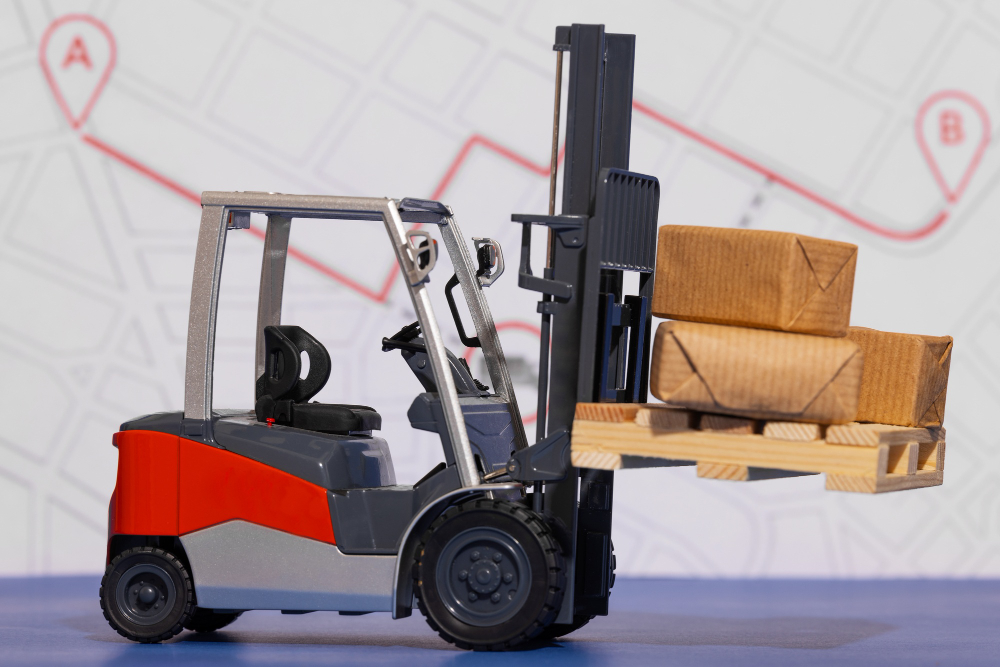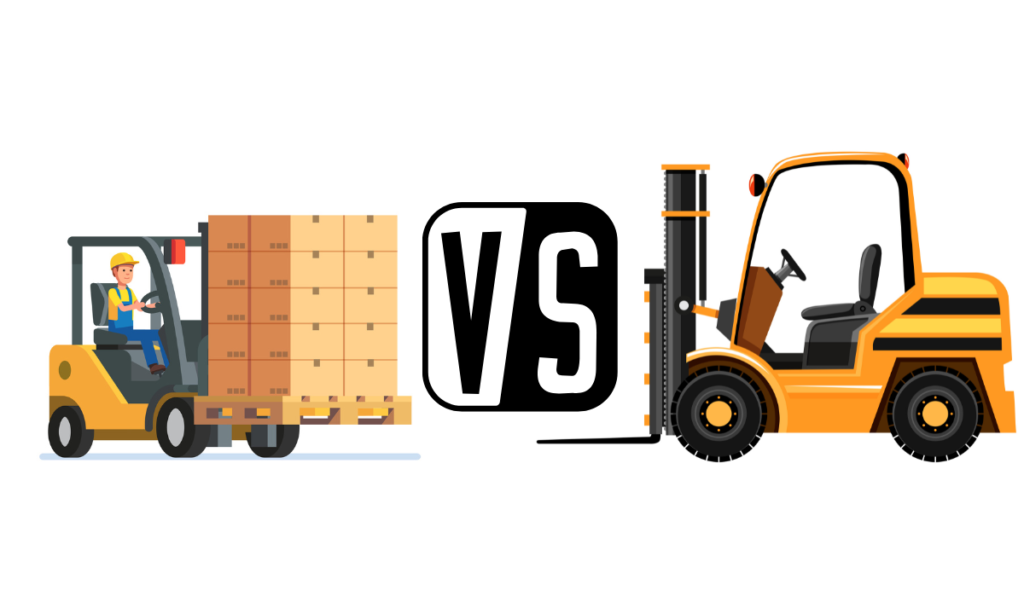Unveiling the Costs: How Much Does a Forklift Really Cost? A Complete Guide for Buyers
When it comes to increasing productivity in warehouses and manufacturing facilities, forklifts are equipment that is of great importance. However, many buyers find themselves inquiring, “How much does a forklift really cost?” The answer, quite frankly, is not set in stone but is determined by varying factors that play a major role in the grand total.
From the type of forklift and its characteristics to the choice between a new and a used vehicle, understanding of the intricacies is the main thing for making a proper decision of buying.

In this guide, we will reveal the expenses of the purchase of a forklift. We will not only dissect the upfront price but will also see all the other associated costs like maintenance, insurance, and other operational expenses in detail. If you are an entrepreneur or a fleet managing firm, getting the maximum of the investment will be possible through our ideas, which are going to be discussed here. Together with us, you will break down all the things necessary for you to be aware of and be sure that the money you have is well spent.
Understanding Forklift Costs
Forklifts are a considerable outlay of funds, and their costs can considerably change based on several factors. Knowing the complete picture of the costs related to forklifts is very important in the process of making an informed decision about the purchase. The initial purchase price is just the least of your worries; there are still many other expenses to be thought of, like maintenance, fuel or battery replacement, and insurance.
On top of that, it is critical to understand that the cost of a forklift can be part of your operations’ specific needs which could affect the price. The load capacity, lift height, and the type of terrain the forklift will travel on can singly or in a combination directly impact the money one would pay for a forklift. They should carefully identify the most suitable forklift that will give them the highest benefit.
There are, however, some hidden costs that can surface over time. These might be the outlay of training operators, buying extra attachments, or downtimes in case of breakdown. With a transparent view of all involved expenses, it becomes easier for companies to manage their budgets and keep any unforeseen expenses at bay.
Factors Influencing Forklift Pricing
A few factors can affect the final price of a forklift. One of the biggest influencers, if not the main one, in forklift pricing is the type of forklift. The various types of forklifts are designed for various needs. They will, therefore, have various prices depending on the service they provide. Warehouses, for example, use industrial forklifts that may not be the same as those used at construc…
Another element that affects the price of the forklift is the name. A well-known brand can always sell a product at a higher price without any protest from the customers as they already have the image of a company that produces only high-quality and reliable things. On the other hand, new companies’ brands can also offer a good price-quality ratio, especially if the product matches the technology that a given company is looking for. It is important to conduct extensive research and compare different brands to select the most budget-friendly one.
The technical parameters of the forklift can significantly affect its price. Forklifts that have advanced technical characteristics which include auto controls, safety systems, and an increase in load capacity are expected to be more expensive. Companies need to analyze which characteristics are fundamental to the operation of their enterprise and which can be dispensed with to avoid unplanned costs.
Types of Forklifts and Their Price Ranges
Forklifts are indeed different types, which are meant for different sectors of work. Electric forklifts, internal combustion forklifts, and rough terrain forklifts are the most readily available in the market. Moreover, the aforementioned ones have a wide range of prices based on the application they are intended to be applied in.
Electric forklifts can be found in facilities like warehouses and factories, garnering a lot of attention. They operate silently and emit less. The price of a batch of electric forklifts can range from $15,000 to $35,000; the total cost is greatly determined by the product’s features and capabilities.
Internal combustion (IC) forklifts are powered by diesel, gasoline, or propane and are thus mainly used in open places. These forklifts’ features are offering increased load capacities of the engines and the lift than those of electric forklifts. The cost of IC forklifts can vary from $20,000 to $50,000, the highest specifications being more costly.
For example, rough terrains forklifts are designed to operate in difficult outdoor environments, for instance, construction sites. This type of forklift has bigger tires and more ground clearance so that it can go over surfaces that are not flat. Based on what features a machine has and how it performs, the cost of rough terrain forklifts may differ, but generally, it may vary from $30,000 to $70,000.
New vs. Used Forklifts: Cost Comparisons
One of the major decisions that consumers need to make is whether to go for a brand new forklift or a used piece of a machine. Both options are promising, but the choice is essentially determined by the budget availability and the kind of operations that need to be performed.
The new forklifts as a benefit come with the latest technology, long-term warranties, and the guarantee of being reliable. They are less likely to break down immediately and can be tailored to the client’s needs. It is true, however, that new forklifts are generally costly. Depending on the type and specifications, a newly-purchased forklift can range from $20,000 to $100,000 or even more.
Second-hand forklifts, on the other hand, are cheap to buy, and hence a better choice for businesses on a tight budget. The price of the used forklifts may be substantially below, e.g., $30,000, depending on their condition and age. Nevertheless, the used forklifts have a higher chance of requiring more frequent repairs and they are less durable.
It is imperative to carry out a thorough inspection of used forklifts and stay well informed about their maintenance history before deciding to buy it. At the same time, business owners should take into consideration the initial cost but also the potential future costs of maintaining the equipment when they decide.
Additional Costs to Consider in Forklift Ownership
In addition to the upfront cost, the forklift buyer has to consider several extra expenses. Regular maintenance is one such recurring cost, which is one of the most significant ones. Periodic maintenance is necessary to ensure that forklifts remain in top working order and do not lead to costly breakdowns. The cost of maintenance may include routine examinations, oil changes, new tire purchases, and repairs.
Fuel or battery replacement is another ongoing cost. Internal combustion forklifts require fuel, and the cost of fuel can be significant, particularly if the forklift is operated quite frequently. Electric forklifts, on the other hand, need new batteries every few years, and the price of a new battery may range from $2,000 to $5,000.
When it comes to cost, insurance is another indispensable factor. The insurance of a forklift will certainly help in covering the damage caused by any kind of accidents, theft, etc. The premium of the insurance could depend on variables such as the forklift’s worth, the frequency of its use, and the amount of coverage needed.
In addition to the abovementioned, the cost of training operators is thus not to be overlooked. Without proper training, safe and efficient forklift operation is not possible, and here, it should be noted that the cost of training programs can differ depending on the quality, the content, and the delivering method of training. An investment in the training of the operators can create safer conditions at the workplace, lower the accident risk, and increase the productivity of the company.
Financing Options for Forklift Purchases
Paying cash upfront for a forklift can be a major expense and financial stress for most businesses. However, there are many methods of choice in financing to earn benefits from. One of the most common choices is getting a regular loan from a bank or another financial institution. Through this, one can divide the cost of a forklift over some years, making it feel much lighter.
Another popular alternative is leasing. By means of a lease agreement, businesses can acquire a forklift and use it for a certain period during which they make regular payments. After the lease term is over, the businesses usually have the two options, they can either purchase the forklift or return it. Leasing can be very much of an affordable choice for businesses that either require forklifts for short-term projects or would prefer to stay away from the full price of purchasing.
Some forklift dealers besides having forklifts for sale also have financial support, which is often, in fact, a convenient and flexible way of obtaining finances. These dealer financing programs may offer competitive interest rates and terms tailored to the needs of the business. It is important to examine the various financing options so that you can select the one that is more suitable for your budget and operational needs.
Rental vs. Purchase: Which is More Cost-Effective?
Similarly to the purchasing of a forklift, enterprises are free to rent forklifts where necessary. Renting can be a cost-effective way out for businesses with short-term or seasonal needs. The cost of renting a forklift can vary based on factors such as the type of forklift, the period of rental, and usage. Renting a forklift can, on average, be of the following expenses $100 to $300 per day, $250 to $700 per week, or $750 to $2,000 per month.

Renting, in this way, comes up with a number of benefits, among them are flexibility and lower upfront costs. The businesses without an obligation of ownership can rent forklifts for projects that demand them only. Furthermore, by renting a forklift, for instance, you are also free of maintenance and repair, as they are usually covered by the rental company.
Nevertheless, in the case of companies that have long-term or frequent forklift needs, purchasing might turn out to be more cost-effective in the medium and long term. When a company owns a forklift, it has a specific equipment at its disposal anytime. Apart from this, owning a forklift may lead to the business’s liabilities linked to taxes decrease and an increase in the asset value.
Budgeting for Unscheduled Forklift Maintenance and Repairs
For companies to feel confident about the durability and performance of their forklift, they need to budget for its proper maintenance and repairs. According to the research by reputable forklift dealers, a well-timed routine of maintenance can continue running your machine smoothly and prevent it from frequent repairs. This process necessitates the following tasks on the schedule of the businesses: checking for tire wear, change of lubricant, change of oil, and many more.
It is important not only to be ready to constantly care for your equipment on a regular basis, but also to be aware that unexpected expenses may occur. Periodic inspections of machinery will reduce accidents but there are instances where unforeseen occurrences can still happen thus the maintenance of the unexpected damage. A reserve fund can be useful in the repair of the forklift which will make you avoid financial strain and reduction of stoppage time through buying a new product will.
The collaboration with an honest maintenance service provider can notably impact the process of dealing with the expenses arising from the upkeep of the forklift. Many of the forklift dealers give maintenance and repairs of the machine at a reasonable price while others give a contract for regular services and repairs at a fixed fee. This contract for the forklift’s full maintenance and repair can at the same time assure the customer and make business budgeting easy at all times.
Following the Guide on the Way to the Best Forklift Offers
Comparing different vendors’ offers and making an informed choice is the core of finding the best forklift deals. By way of example, the first step consists in comparing specific grades of forklifts among different traders. It will give you the advantage of having learned the prices tongue traders in the market, then you can go and buy at the much less expensive price. Nevertheless, other things being equal, direct negotiation remains crucial in extracting the best offer.
Another thing to pay attention to is the total cost of ownership, not only the purchase amount. This covers the costs of maintaining, fuel or battery replacement, insurance, and other operational expenditures. Some dealers can present the customers with maintenance and warranty as a package, and hence giving a better overall offer.
The corporations should similarly ponder the standing and trustworthiness of the seller. Picking the example of a brand dealer who is respected will deliver both kind of supports; ones involving the quality and the support. Reviewing the clients’ experiences and taking referrals from other businesses can be sources of truth in choosing trustworthy dealers.
A third piece of business advice is to be alert to the promotions and discounts that might come about. Dealers are usual suppliers of special offers and discounts on these machines, most especially at the end of the year or during the trade shows. Continuous surveillance of these discounts can help businesses get the best out of the situation available.
Conclusion: Making an Informed Forklift Purchase
It is an asset that entails careful examination of several factors for a company to invest in a forklift. Businesspeople are challenged to see the price ranges of different forklifts and understand their features so as to carry out a cost-benefit analysis.
It is noteworthy that by considering the initial price as well as the ongoing costs such as maintenance, fuel or battery replacement, and insurance, one can be left to find the most suitable option. Similarly, different financial offers and hiring in lieu can give way to different solutions and provide cost cutting chances at the same time.
If thorough research and comparisons are done by the enterprises on various options, they can identify the most suitable forklift deals that fit into their budgets and operational needs. It is also a good idea to plan for maintenance and repairs in case of breakdowns as this will guarantee the longevity of the forklift and the reliability it will provide will justify the investment.
Chiefly, deciding on which forklift to buy is a result of knowing all the costs and factors contributing to your unique operations. When properly applied, companies can avoid pitfalls in forklift capital by clearly grasping the different options available and opt for the one that improves the performance of work and the efficiency of the vehicle.



